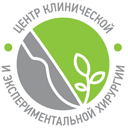Puchkov K.V.
Константин Викторович Пучкòв (род. 1965) — известный российский хирург, доктор медицинских наук, профессор. Основатель научно-практической школы лапароскопических хирургов, подготовивший более 400 учеников в 20 странах мира. Директор обучающего Центра клинической и экспериментальной хирургии. Руководитель хирургической службы Швейцарской университетской клиники (г. Москва). Автор более 600 научных публикаций, 13 монографий и уникальных технологий лапароскопических операций, защищенных 18 авторскими свидетельствами и патентами на изобретения, соавтор специализированных компьютерных программ. В 2006 году, по результатам практической деятельности, Ассоциацией эндоскопических хирургов России признан лучшим лапароскопическим хирургом России и удостоила Почетного знака «Золотой лапароскоп». В 2011 году, за выдающийся вклад в развитие лапароскопической гинекологии был удостоен Почетным знаком «Золотая звезда». В 2011 году удостоен премии им. А. П. Чехова «За высокие профессиональные достижения и верность долгу врача». В 2016 году награжден почетным орденом "Честь и Слава Великой России" за заслуги перед Отечеством.
Laparoscopic organ preserving resection of two pheochromocytes from a single left adrenal gland
Автор: Puchkov K.V.
Laparoscopic organ preserving resection of two pheochromocytes from a single left adrenal gland.
Professor Puchkov K.V. is performing an operation (2019).
Patient 24 years old, in the single left adrenal gland were found two tumors about 2 cm each in diameter, they located in the medial pedicle and in the body of the organ. At the age of 20, he was examined about hypertensive crises. In 2015, bilateral adrenal lesions were diagnosed: on the right a tumor - up to 5 cm, on the left side - 2 lesions: 1 and 1.5 cm. Right-sided adrenalectomy was performed, the histological conclusion was: malignant pheochromocytoma. The patient refused bilateral adrenalectomy. In the future, according to CT data, the growth of lesions of the left adrenal gland is noted. In the analyzes: daily urine metanephrins: maximum metanephrine 8.897 mg/day, normetanephrine 319.3 mg/day. In the preoperative period, he received «Cardura». A laparoscopic organ-sparing surgery was performed - removal of two formations with full preservation of the adrenal tissue. Access to the adrenal gland was done by mobilising the splenic angle of the colon and dissecting the tissue between the Tolds fascia and Herota fascia. The intersection of the vascular structures and adrenal tissue is performed by alternating ligation systems — 5 mm Thunderbeat Olympus instrument and 5 mm LigaSure MEDTRONIC COVIDIEN instrument. The operation is carried out quickly and bloodless. The tumor is cut off from the body of the adrenal gland and placed in a plastic container in which was removed from the abdominal cavity. For the hemostasis «Tachocombe» was used at the sites of tumor removal. The operation time was 40 minutes. Histology - pheochromocytoma of solid-alveolar structure with polymorphoncellular composition.
You can read about this technique in detail on the personal cite of Professor Puchkov Konstantin Viktorovich. To go to the link.
Da Vinci surgical system Laparoscopic approach in the treatment of recurrent genital prolapse. Redo promontofixation procedure.
Автор: Puchkov K.V.
Da Vinci surgical system Laparoscopic approach in the treatment of recurrent genital prolapse. Redo promontofixation procedure. Professor Puchkov K.V. is performing an operation (2019).
The film shows the technique of redo promontofixation procedure for genital prolapse III stage. In 2017, the patient underwent a robotic (da Vinci) hysterectomy without appendages and promontofixation with a mesh implant fixation to the anterior wall of the vagina. After 5 months, relapse developed. At the first stage, the pararectal space on the right was dissected with a 5 mm monopolar electrode and the dissection of the right lower hypogastric nerve. An excess mesh length was detected (stretching or inadequate selection of its length during the first operation). The fixation of the proximal edge to the promontory is reliable. In this regard, it was decided not to cut off its proximal part, but to cross the implant in the middle part. Next, lightweight promontofixation with a soft mesh implant MEDTRONIC COVIDIEN was performed according to the author's methodology (patent from 2015). The new implant was fixed to the distal part of the mesh in the area of the dome of the vagina and its proximal part, with adequate tension. The suture material was non-absorbable V-lock (MEDTRONIC COVIDIEN) and Prolen thread. Peritoneum was closed with Monocryl thread. The anterior and posterior colporrhaphy with levatoroplasty was also performed. The duration of the laparoscopic phase of the operation was 40 minutes. The patient was examined after 3 months, no complaints.
You can read about this technique in detail on the personal cite of Professor Puchkov Konstantin Viktorovich. To go to the link.
Laparoscopic partial Toupet fundoplication (270 gr.) with recurrent HH after Nissen fundoplication with an additional prosthetic mesh implant
Автор: Puchkov K.V.
Laparoscopic partial Toupet fundoplication (270 gr.) with recurrent HH after Nissen fundoplication with an additional prosthetic mesh implant
Surgeon: professor K.V. Puchkov (2019).
The patient is 49 years old; a year ago he underwent laparoscopic Nissen fundoplication on HH. After 4 years there was a recurrence of the HH over the esophagus, the place of cruroraphy is wealthy.
The video shows a reoperation technique for relapsed HH by laparoscopic approach. Mobilization of the gastroesophageal junction is performed with a 5 mm monopolar electrode and LigaSure MEDTRONIC COVIDIEN instrument. There is marked adhesions in the area of operation. The Nissen cuff is untenable. Particular attention is paid to the careful separation of the esophagus and the upper part of the stomach from adhesions, the elimination of the fundoplication cuff. Surgery is carried out quickly and bloodless. Next step - the top cruroraphy and partial Toupet fundoplication (270 gr.). The line of stitches is strengthened with the help of additional prosthetics of this zone with a special 3D with the Parietex Composite mesh and its fixation according to the author's safe technique with a flexible Relia Tack MEDTRONIC COVIDIEN bend hernia stapler. Implant fixation is performed by absorbable takers. The duration of the operation is 1 hour and 40 minutes.
You can read about this technique in detail on the personal cite of Professor Puchkov Konstantin Viktorovich. To go to the link.
Laparoscopic partial (270 gr.) Toupet fundoplication with cruroraphy and mesh implant.
Автор: Puchkov K.V.
Laparoscopic partial (270 gr.) Toupet fundoplication with cruroraphy and mesh implant.
Surgeon: professor K.V. Puchkov (2019).
The video shows the technique of correction of the paraesophageal hernia of the diaphragm (5 cm) by the laparoscopic approach. Mobilization of the gastroesophageal junction is performed with 5 mm LigaSure MEDTRONIC COVIDIEN instrument. Surgery is carried out quickly and bloodless. Attention is paid to the sequential intersection of the esophageal - phrenic and fundal-phrenic ligaments. Short gastric vessels intersect with the LigaSure instrument, under the esophageal space. Particular attention is paid to thorough cruroraphy with additional prosthetics of this zone with a special mesh implant of the 3D grid Parietex Composite and its fixation according to the safe author's technique with a flexible Relia Tack MEDTRONIC COVIDIEN bend hernia stapler. The implant is fixed by absorbable tackers, at 4,6,9,11 hours along the inner edge of the mesh at an angle to the esophagus. The paper entry vector is perpendicular to the pedicle of the diaphragm and from the pericardium to the esophagus. At the final stage, a partial Toupet fundoplication is performed (270 gr.). The duration of the operation is 80 minutes.
You can read about this technique in detail on the personal cite of Professor Puchkov Konstantin Viktorovich. To go to the link.
Laparoscopic cosmetic correction of diastasis recti and umbilical hernia (punctures in the bikini area)
Автор: Puchkov K. V.
Laparoscopic cosmetic correction of diastasis recti and umbilical hernia (punctures in the bikini area)
Surgeon: professor K.V. Puchkov (2019).
The patient is 22 years old. Two childbirth in history. It has high aesthetic requirements for surgery. Diastasis recti 17x4.5 cm. Reversible umbilical hernia 3 cm. The film shows the technique of cosmetic correction of diastasis recti and umbilical hernia by suturing them with the V-lock system (MEDTRONIC COVIDIEN) on an atraumatic 2-0 non-absorbable needle. This stage is performed through trocars inserted in the bikini area. The final stage is the closure of the suture line with a Parietex Composite composite mesh (20x16 cm) and its fixation with transperitoneal sutures and a combination of absorbable and nonabsorbable AbsorboTack tacker bags using the ProTack MEDTRONIC COVIDIEN hernia stapler. The duration of the operation is 40 minutes.
You can read more about the techniques on the personal site of Professor Konstantin Viktorovich Puchkov.
Laparoscopic correction of diastasis recti through the scar after Caesarean section
Автор: Puchkov K. V.
Laparoscopic correction of diastasis recti through the scar after Caesarean section
Surgeon: professor K.V. Puchkov (2019).
The patient suffered a Caesarean section 2 years ago. Diastasis recti 16x4 cm. The film shows the technique of cosmetic correction of diastasis of the rectus abdominis muscles by suturing them with the V-lock system (MEDTRONIC COVIDIEN) on an atraumatic needle with a non-absorbable 2-0 thread. This stage is performed through trocars inserted in the scar zone after the Caesarean section. The final stage is the closure of the suture line with a Parietex Composite mesh (20x16 cm) and its fixation with transperitoneal sutures and a combination of absorbable and nonabsorbable AbsorboTack tacker bags using the ProTack MEDTRONIC COVIDIEN hernia stapler. The duration of the operation is 50 minutes.
You can read more about the techniques on the personal site of Professor Konstantin Viktorovich Puchkov.
Excision of retroperitoneal dermoid cyst (mature teratoma 15 cm) by laparoscopic approach
Автор: Puchkov K.V.
Excision of retroperitoneal dermoid cyst (mature teratoma 15 cm) by laparoscopic approach Professor Puchkov K.V. is performing an operation (2019).
The patient is 21 years old. Complaints of arching pain in the right hypochondrium and lumbar region. The video shows a cross-sectional CT scan, where a large cyst with dense walls and fragments bone inside was determined, which was located between the inferior vena cava and aorta. During the laparoscopy, topographic anatomy is shown. Areas of surgical intervention: hepatoduodenal ligament, right kidney, duodenum, left renal vein, inferior vena cava. Clearly visible front wall of the cyst under the IVC, duodenum and hepatoduodenal ligament. The operation was started with dissection of the parietal peritoneum at the lower pole of the cyst between Toldi’s fascia and Gerota fascia. Next step - with 5 mm Thunderbeat Olympus device the dissection of the retroperitoneal cyst was performed. Cyst wall capsule was tightly soldered to the rear wall of the IVC. In this regard, the peritoneum was dissected medially to the IVC and the inferior vena cava was maximally separated from the cyst wall. Further cyst was opened with a monopolar electrode and contents (800 ml) aspirated. Fat, hair and bone fragments were founded in the lumen. After aspiration, the separation of IVC and anterior cyst wall in a "blunt" way. Further visualized the right renal artery that was intimately soldered from a cyst capsule. The medial margin of the cyst was separated from the anterior walls of the aorta and surrounding tissues. The lumbar artery was clipped and crossed. The base of the cyst in the lumbar muscles was coagulated. The cyst was placed in a plastic container and removed from abdomen. The duration of the operation was 1 hour and 50 minutes. Histological examination - the wall of the tumor consists of well differentiated germline derivatives with predominance of ectodermal derivatives: the elements are determined skin with all its components (epidermis, fibrous layer), elastic and fatty tissues, sweat and sebaceous glands, hair follicles), elements of fibrous and bone tissue. Mature teratoma (dermoid cyst).
You can read about this technique in detail on the personal cite of Professor Puchkov Konstantin Viktorovich. To go to the link.





 Video of operations
Video of operations

